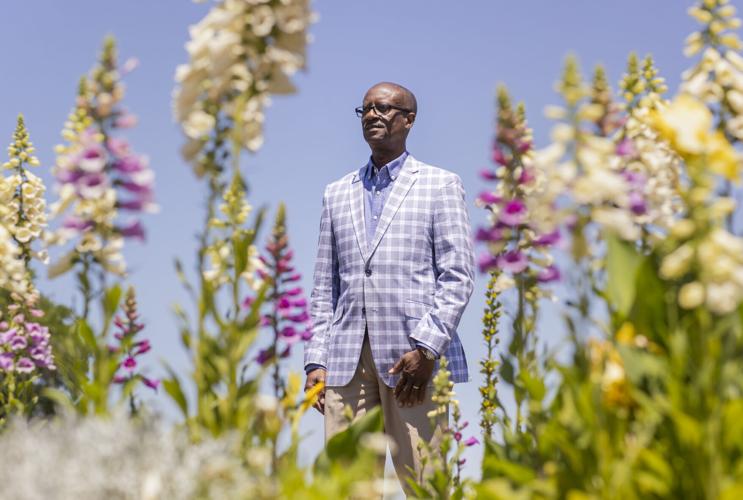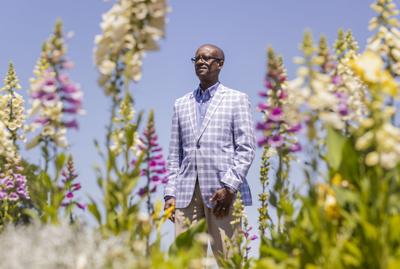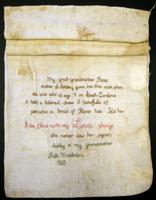SUMMERVILLE — Sidney Frazier walks the grounds first thing most mornings gathering his thoughts, taking inventory, identifying issues in need of attention, greeting colleagues.
It’s a favorite part of his day, a chance to survey an important American landscape that for 50 years now he has nurtured and protected.
Fifty years at Middleton Place. Fifty years of historical preservation, making his own history as he went along. Fifty years of stewardship.
He greets colleagues and volunteers. He welcomes visitors. Sometimes he’s wearing a sports jacket because of upcoming meetings. Sometimes he’s prepared to touch the earth. Once in a while, he’ll hop onto a riding mower.
Officially, he is in charge of the historic site’s horticulture. But, really, he’s in charge of everything. It’s no exaggeration to say that Middleton Place is what it is today in large measure because of Sidney Frazier.
* * *
The heart of the former rice plantation now is its vast gardens. It is from the abundant flora that all else springs — the historical research and interpretation, the physical accoutrements such as the house museum and stableyards, the events.
It wasn’t always this way. Before the Civil War, Middleton Place was the main plantation property of the Middleton family line, where enslaved people labored in distress to make the White planters rich. Rice, not camellia flowers, was at the center of the operation.
It was a place of beauty even then, artfully sculpted by Africans and their descendants. But it was also a place of abuse and greed and excess that helped entrench white supremacy.

Sidney Frazier in the gardens of Middleton Place on April 23, 2024. This is his favorite quiet spot where he likes to meditate to the sounds of nature.
Middleton Place, damaged in the war and again when the 1886 earthquake shook the Lowcountry, was neglected for decades. In 1916, a Henry Middleton descendant, J.J. Pringle Smith, inherited the property. When his father, Henry Augustus Middleton Smith, died in 1924, Pringle Smith came into some money, which he used to launch an ambitious restoration project.
His wife, Heningham, already had begun to revitalize the overgrown gardens. It took her 15 years. But then the oldest landscaped gardens in the U.S. shone forth, becoming the bright jewel of the property.
The gardens feature a plethora of azaleas and camellias, some of which have genetic lines that date back centuries. Certain areas are cultivated according to English traditions, with finely manicured lawns, clear borders and orderly plantings. Other areas are “romantic” — lush, wild, a bit messy when camellia petals fall to the ground in February and March.
So it takes someone with the greenest of green thumbs to take care of it all.
* * *
Frazier, 66, was born on James Island and grew up with his grandparents who were sharecroppers. His parents, Margaret and Oswell, and their oldest daughter migrated north to New York to find a better income. Oswell joined the service; Margaret became a domestic worker.
Young Sidney, then about 5 years old, was held back by his grandfather. He lived in a small cottage, 30 feet by 30 feet, with a breezeway that connected it to a second cottage where his aunt and her children lived.

Sidney Frazier, 66, has been at Middleton Place for 50 years.
He spent his days helping on the small farm where the family grew tomatoes, cucumbers, collard greens, cabbage and more. Early in his life he forged a connection with the land. But he learned more than farming; he learned how to help others. He learned about teamwork and leadership and the need for collaboration. He learned about trust and discipline and how to do work that wasn’t always pleasant but always rendered its rewards.
“I had great mentors,” he said of his uncles. They taught him the value of focus and purpose and connection.
He was 16 when he applied for a gardening job at Middleton Place. His affinity for the property was instant. Here was an expanse of land shaped by Black people.
“I never knew Middleton Place existed,” he said. “In school, I never learned about plantation life, slavery.”
Now he was looking at gardens of the sort he assumed only existed in France or England — evidence that contradicted all he’d been taught about African American inferiority.
And he came to a sudden realization: “The land never enslaved anyone, it’s the people who did.”
Sidney Frazier had no beef with the land. He loved the land.
* * *
Charles Duell hired Frazier the day the teenager showed up in search of work. Duell, who inherited the property from his grandparents and who was in the process of making it a nonprofit trust meant to serve the public, recognized talent when he saw it.
The teenager was an enthusiastic and intelligent applicant, Duell said. “It was obvious he was going to go someplace.”

Charles Duell, founder of the Middleton Place Foundation, is pictured near a live oak at Middleton Place on Feb. 1, 2023.
Frazier started as a gardening gopher, doing as he was told. He learned fast and over time proved himself capable of various skills: carpentry, plumbing, masonry, electrical work.
So he planted foliage and flower beds and built the brick borders. He checked the soil’s pH levels and operated the heavy equipment. He worked with the arborists and fixed plumbing problems at the house or restaurant.
In the 1980s, Middleton Place Foundation needed governing officers and administrative principals. Duell asked Frazier to be vice president of horticulture. Now Frazier’s attention would widen; he would focus less on individual flowers and more on the design and maintenance of the entire garden landscape.
Today, Middleton Place interprets many aspects of its history and emphasizes the Black experience more than ever. But the gardens always have been at the center of things, both as a tangible example of the site’s labor-intensive restoration at the hands of Heningham and Pringle Smith, and as a metaphor for Black ingenuity and achievement.
“Historic preservation is not just about historic sites, it’s about people,” Duell said.
Frazier, ever aware of the significance of his work, added credentials to his experience. He secured a degree in horticulture from Trident Technical College.
As longtime staff members retired or moved away, Frazier assumed more and more responsibility, eager to soak in Duell’s knowledge of the property and its features. Rarely does Frazier carry his pruner with him these days. Often he dons that blazer because of meetings he must attend.
But his eye is always turned on the flora.
* * *
About those meetings: Frazier is not the vociferous or confrontational type. He listens a lot and thinks hard, observed Tracey Todd, former vice president of museums at Middleton Place, now on the staff of the Historic Charleston Foundation.
“When he speaks, it really means something,” Todd said. “He is filled with wisdom. I would seek his advice whenever I possibly could.”
Frazier’s vast horticultural knowledge is gained from decades of hands-on experience, Todd said.
“He’s had his hands on every plant in that garden,” she said. “There’s nothing he’ll ask a gardener to do that he hasn’t done himself.”

Tracey Todd, former CEO and president of Middleton Place Foundation, stepped down in 2023.
That’s the obvious stuff, though. Many of Frazier’s talents are less well known. He’s the one to operate the in-house motor grader, shaping the property’s dirt and gravel roads. He’s the one to run the front-end loaders. He’s the one to fix a water main break. He’s the one who responds in the middle of the night to the security alarms going off or a sewage clog. He’s the one to ensure enough chairs are set in place for a planned event and to explain to residents across the Ashley River what sorts of buffering trees and shrubs are appropriate to plant along the easements secured by Middleton Place years ago.
He approaches every problem with a level-headed calm and the furled brow of a problem solver, Todd said.
“He’s definitely got this can-do spirit about him, always positive no matter what the obstacle we’re facing,” she said. “As a result, he inspires and builds up the team. His combination of calm reason and positivity is just unmatched.”
From 1979 to 1993, Frazier lived in a small cabin on the Middleton Place property. It was no inconvenience, the horticulturalist said. It reminded him of his childhood. Today he lives on Johns Island.
Twice married, Frazier is the father of seven children and grandfather of nine. He has been an active patriarch, advocating for his kids at their schools, mentoring others, attending PTA meetings and fundraisers, and even becoming a member of a constituent school board for a while.
“I believe that everyone is a leader, you just have to find your purpose,” he said. “We all have something to offer.”
He spent so much time in the schools that he became something of a surrogate parent to many children over the years, accompanying some to the stage when they received awards, offering advice and support.
“I had great mentors,” he said. “So why not help others?”
His leadership talents and generosity has found other outlets, as well. He is a pastor of the 15-year-old Full Faith Ministries on Johns Island, an enterprise he hopes to expand in the near future.
* * *
Twenty years ago, Matt Jackson was working at a nursery in Charlotte when he visited a good friend in Charleston and noticed an ad in the paper. Middleton Place was looking for nursery help.
He interviewed with Frazier and got the job. Suddenly, he was part of a dedicated staff whose members considered themselves family.
Jackson watched and learned. He noticed how Frazier was busy everywhere yet always had time for his colleagues. He noticed how calm Frazier would remain in the face of any emergency. He noticed how many people remained on the job for many years, reluctant to leave a place so welcoming.
Jackson understood quickly that Frazier was an important ally.

Matt Jackson separates the weeds from Carolina Gold rice during a 2013 rice harvest at Middleton Place.
“Sidney takes the time to teach you, if you want to listen, and he will teach you everything you need to know,” Jackson said. “He’ll praise you in public but pull you aside to talk if you’ve screwed up, explaining how he’d handle the situation and how he’d like you to handle the situation moving forward with more knowledge.”
Jackson has moved forward. Today, he is director of security and wildlife management, a carriage driver and one of the managers of the stableyards.
“People see what they see when they come here, but Sidney taught me to see what they don’t see, which is underground, which is a huge, huge part of this property,” Jackson said.
And Frazier taught him the importance of treating people well, of returning a friendly greeting from a distance, of collegial gatherings that boost morale and reinforce that sense of family.
“All of that comes from Sidney,” he said. “I want to be able to pass down all the things I’ve learned from him.”
* * *
On a recent sunny spring morning, Frazier walks the grounds, as he always does, greeting people, scrutinizing the landscape, registering tasks in his mind. A group of volunteers is tidying up a portion of the gardens.
In a couple of weeks, that area will be completely remade, he said.

Sidney Frazier, vice president of Horticulture at Middleton Place (left), and Mike Dunkerley, a certified arborist with Bartlett Tree, talk about pruning The Middleton Oak in 2008, around the time an enormous limb broke off the tree.
The Middleton Oak looms on a bluff overlooking the Ashley River. Birds flit across the sky. It is a scene imbued with a certain timelessness.
Frazier is committed to conveying the Middleton Place saga — all the pain and labor and exploitation, all the beauty and accomplishment. He does it his way, by ensuring that people are always welcomed here and by celebrating the triumphs of Black people who worked on this old rice plantation over the centuries.
He thinks about how race relations have deteriorated in recent years and how knowledge of history might offer a remedy.
The history rooted in this Lowcountry soil like so many centuries-old live oaks illuminates past and present, and it prepares us for what’s to come.
“If you can understand the past, you can chart out a better life,” he said.
His early morning walks across Middleton Place, therefore, do not fill his head only with practical matters. With each step, Sidney Frazier is charting his path and leaving his mark.



















